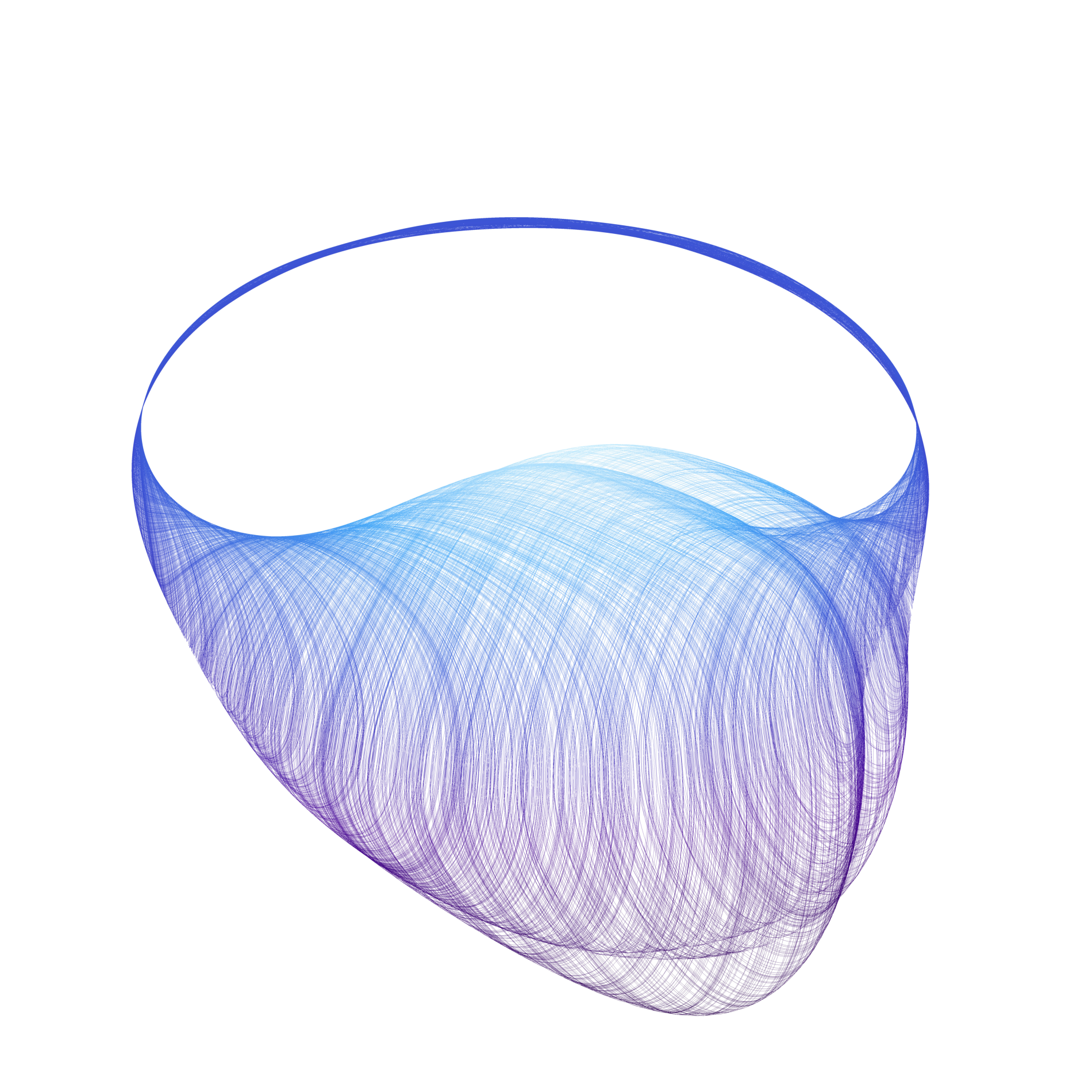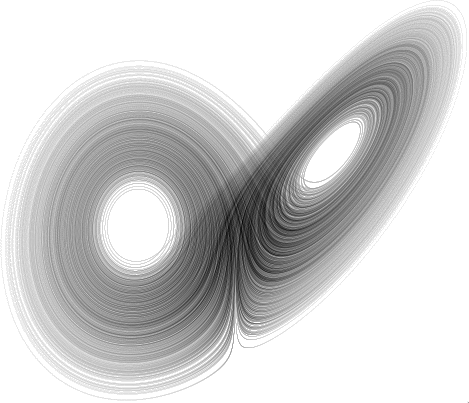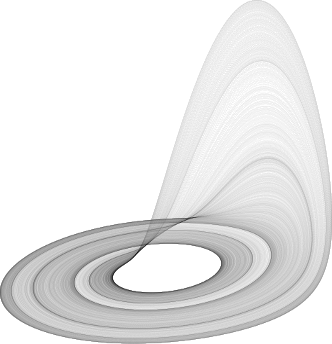The CAPD library has been used in several articles in which chaotic dynamics, bifurcations, heteroclinic/homoclinic solutions and periodic orbits were studied.
- The existence of simple choreographies for the n-body problem
- Homoclinic and heteroclinic solutions
- Chaotic dynamics for various ODE's
- Invariant curves through the KAM theory
- Cocoon bifurcations
- Rigorous verification of period doubling bifurcations for ODE's
- Rigorous numerics for homoclinic tangencies
- Uniformly hyperbolic attractors for Poincare maps
- Rigorous numerics for dissipative PDE's
- Normally Hyperbolic Invariant Manifolds
- Dynamics of the universal area-preserving map associated with period doubling (written by Tomas Johnson)
|
Chaotic dynamics for various ODE's
By chaotic dynamics we often understand semi-conjugacy of the map restricted to an invariant set to the shift map on some number of symbols. In this situation we will say that the map has symbolic dynamics. For this purpose some methods were developed. Very pioneer works with an application to an ODE are [1,2,3], where the authors verified that a Poincare map for the well known Lorenz system x' = σ(y-x), y' = x(ρ-z)-y, z' = xy-βz for parameter values (σ,ρ,β)∊{(10,28,8/3),(10,60,8/3),(10,54,45)} has symbolic dynamics. They used a method based on discrete version of the Conley index. Later, Piotr Zgliczynski [4] proposed a method based on the Brouwer degree theory and called the method of covering relations. The method has been proved to be very efficient and it has various applications to:
In each of these results except [5] the authors used rigorous C0-solver from the CAPD library to integrate the system and to obtain a verified enclosure for Poincare maps. References:
|
|
Applet written by Marian Mrozek, which shows dynamics of the Lorenz equations.
|





